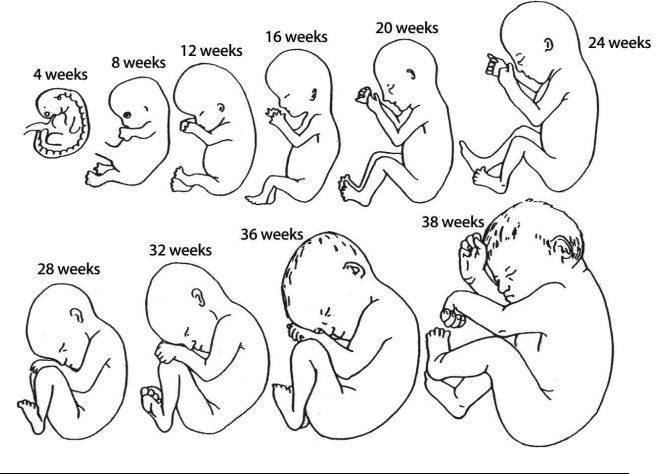Handling PDF documents online can be very simple with our PDF tool. You can fill in development of human fetus lab answers here in a matter of minutes. To maintain our tool on the forefront of practicality, we strive to adopt user-driven capabilities and improvements regularly. We are always grateful for any suggestions - join us in reshaping PDF editing. In case you are looking to get going, this is what it will require:
Step 1: Open the PDF file inside our tool by hitting the "Get Form Button" above on this page.
Step 2: This editor grants the capability to work with almost all PDF files in various ways. Enhance it with personalized text, adjust what is already in the document, and add a signature - all when it's needed!
For you to finalize this PDF form, be sure to enter the required details in every single blank:
1. To get started, once filling in the development of human fetus lab answers, start out with the section with the subsequent blanks:

2. Once your current task is complete, take the next step – fill out all of these fields - Name, Regents Biology, Table Change in Size of a, Time weeks, Length mm, Time weeks, Length mm, month, months, months, months, months, months, months, and months with their corresponding information. Make sure to double check that everything has been entered correctly before continuing!
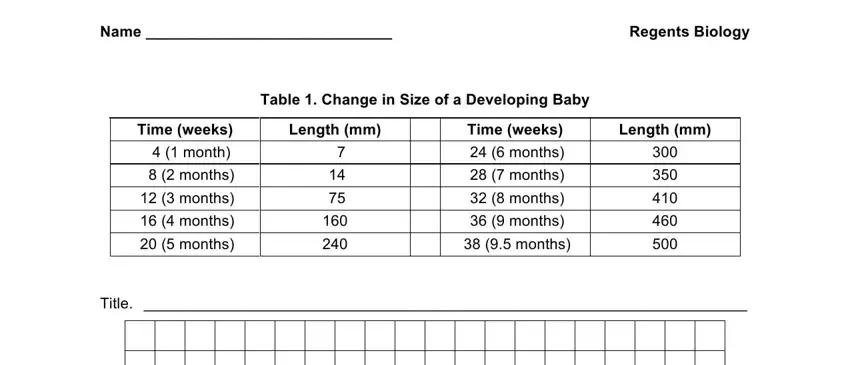
3. The following segment is about Name, Regents Biology, Table Change in Mass of a, Time weeks, Mass grams, Time weeks, Mass grams, month, months, months, months, months, months, months, and months - fill in these empty form fields.
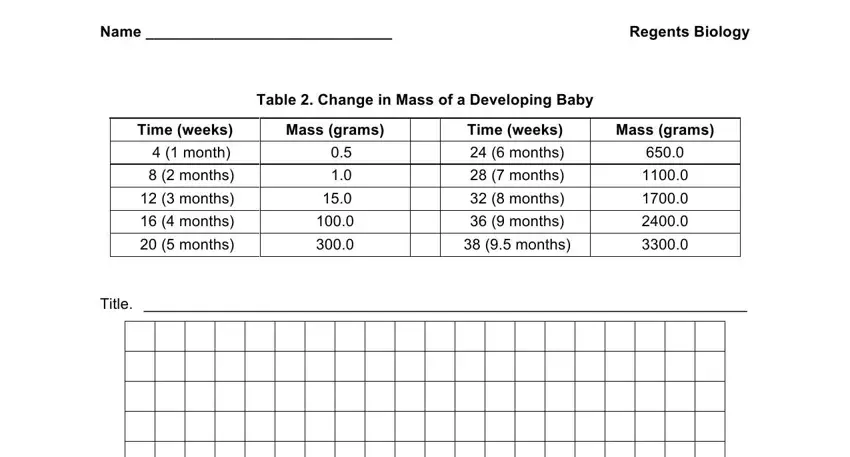
4. This next section requires some additional information. Ensure you complete all the necessary fields - Name, Regents Biology, Table Survival Rates of Babies by, Time weeks, Survival, Time weeks, Survival, months, months, months, and Title - to proceed further in your process!
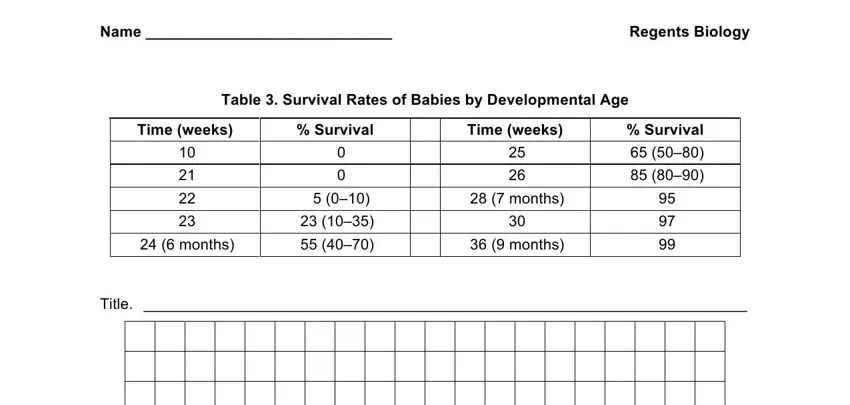
People generally make errors while filling out Survival in this part. You need to go over whatever you enter here.
5. The form needs to be completed by filling out this section. Here you'll find a full list of blanks that need specific details to allow your form usage to be accomplished: Name, Regents Biology, ALCOHOL AND PREGNANCY WHAT YOU, When you drink alcohol so does, FACTS ABOUT ALCOHOL, Alcohol is a teratogen A, cause serious birth defects It, Alcohol crosses the placenta to, and that connects mother to baby and.
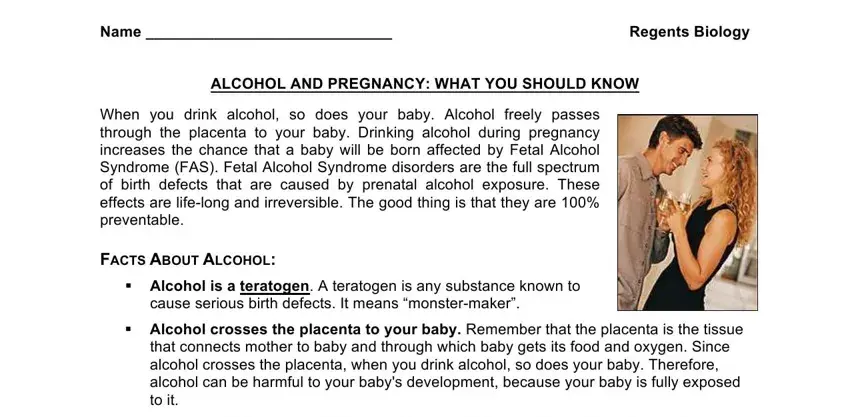
Step 3: Soon after double-checking the completed blanks, press "Done" and you are good to go! Download your development of human fetus lab answers when you join for a free trial. Immediately get access to the form from your FormsPal cabinet, together with any edits and adjustments conveniently kept! When you use FormsPal, you can easily fill out documents without worrying about personal data breaches or data entries getting shared. Our secure software makes sure that your personal details are stored safe.

